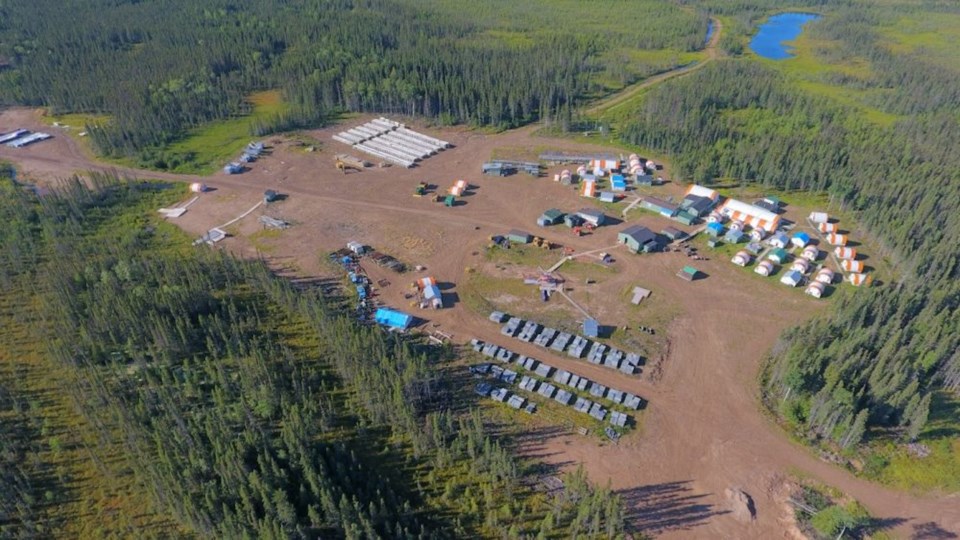Noront Resources, once the exploration front runner in the Ring of Fire, has undergone some cosmetic changes as fall exploration activity resumes in the James Bay region.
Now under Australian ownership in Wyloo Metals, most of Noront's senior team has been reformed and rebranded under the new name of Ring of Fire Metals.
Wyloo finalized its acquisition of Toronto-based Noront last April.
In a news release, Wyloo said the renamed company coincides with a resumption of activity at the flagship Eagle’s Nest nickel-copper project as well as field work across its property, situated some 500 kilometres north of Thunder Bay.
“We highly value the rich history associated with the Ring of Fire region, the importance of the region to Canada’s critical minerals future, and all that Noront Resources had achieved before we came on board,” said Wyloo Metals CEO Luca Giacovazzi in a news release.
“Although we are Australian owned, we feel strongly about building on the company’s Canadian roots and growing Ring of Fire Metals to deliver jobs, business opportunities and economic development for Indigenous communities, Ontario and Canada more broadly.
Want to read more stories about business in the North? Subscribe to our newsletter.
Steve Flewelling, Noront’s former senior vice-president for mining and projects, is the company’s acting CEO.
Alan Coutts, the president and CEO of Noront, is now an advisory committee member for Wyloo.
Some familiar faces of the Noront team remain with the project.
Greg Rieveley is CFO. Mark Baker is vice president of projects, Glen Nolan is vice president of government affairs.
Stephen Crozier comes over from IAMGOLD to be vice president of sustainability.
In an update, Wyloo said the Esker base camp, located next to the Eagle’s Nest deposit, recently re-opened after closing in September last year following the conclusion of the summer 2021 exploration program.
Forty-four new employees and contractors have been hired to work at the site. Half are from First Nation communities including Webequie, Marten Falls, Aroland, Neskantaga, Attawapiskat and others.
“Ontario has a once-in-a-generation opportunity to become a world-leading hub for the production of the critical minerals the world needs to de-carbonize and we want to play our part in connecting the minerals in the north with the manufacturing might in the south,” added Giacovazzi.
“Ring of Fire Metals reflects the grit, determination, and unwavering commitment to sustainable mining, and to giving back to local communities, that will help us achieve this goal.”
In a statement, Flewelling was enthusiastic about restarting work.
“Eagle’s Nest is one of the highest-grade nickel-copper-platinum-palladium deposits in the world, and we’re also very excited about the potential of our other mineral opportunities across the Ring of Fire region,” he said.
“We are currently drilling to gather detailed structural data at Eagle’s Nest so we can finalize infrastructure planning for the mine’s development.
“In parallel, we are refreshing the Eagle’s Nest mining, metallurgical and infrastructure studies and assessing how our operations can be tied into Ontario’s first battery metals plant.
“We are also conducting a diamond drill program on a number of our nickel targets, ground and airborne geophysical surveys over several of our 70 plus regional nickel targets and are collecting soil samples across other major structures.
“Moving forward, we plan to keep the site open year-round and the next milestone on the exploration front is to finalize the scope of our winter exploration campaign.”
Sign up for the Sudbury Mining Solutions weekly newsletter here.
Significant upgrades are taking place at the site, including improved office and building facilities, IT infrastructure and internet access to prepare for the increased exploration effort.
“We have installed a WindCube® lidar system at the site to analyze the possibility of using wind power in the future, which will help to reduce our carbon footprint – a key consideration as we seek to adopt sustainable practices across all of our project, exploration and site activities,” said Flewelling.


